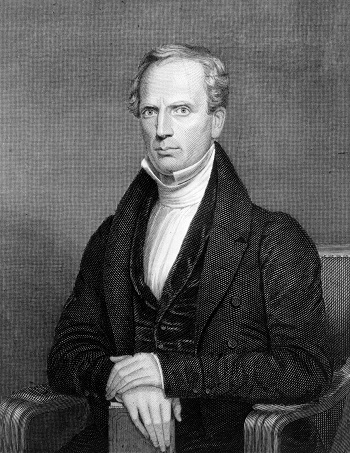
Jefferson County, New York, was the location
where Charles G. Finney began his ministry
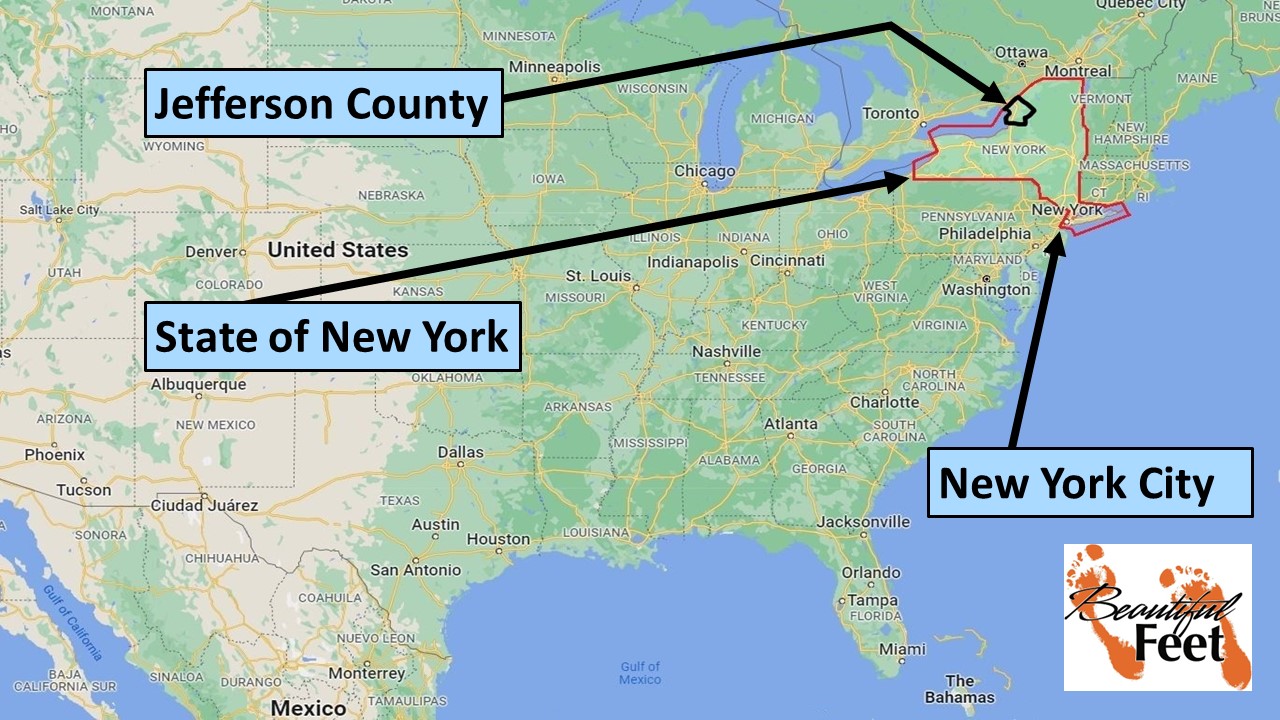
Jefferson County, New York, is outlined in black
Preliminary Reading
To help with the historical context, we recommend reading about the revivals that had been previously occurring in other New England states. Those revivals can be read with these accounts:
► 1790-1840 Second Great Awakening
► 150 New England Revivals (1797 – 1814)
► 1815-1840 Upstate New York Revivals
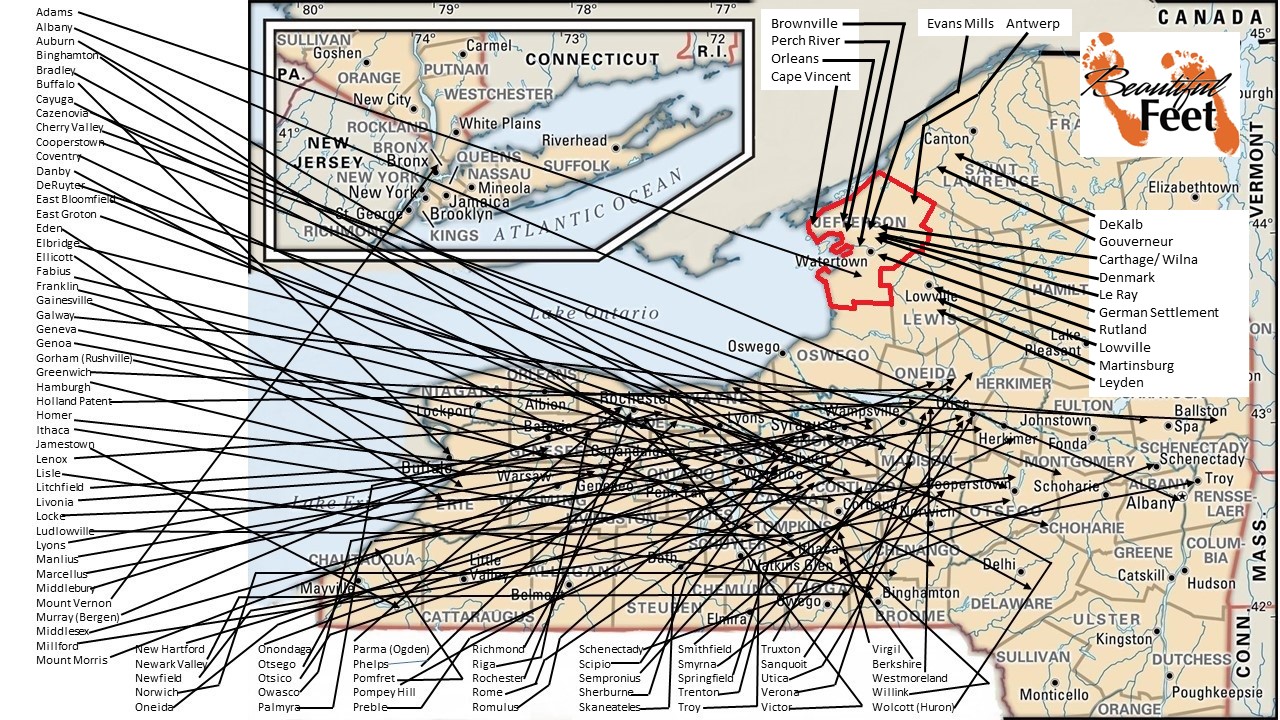
State of New York: Jefferson County is highlighted in red. The black lines indicate locations where the revival spread over the next decade. The area became known as the “Burned-Over District.”
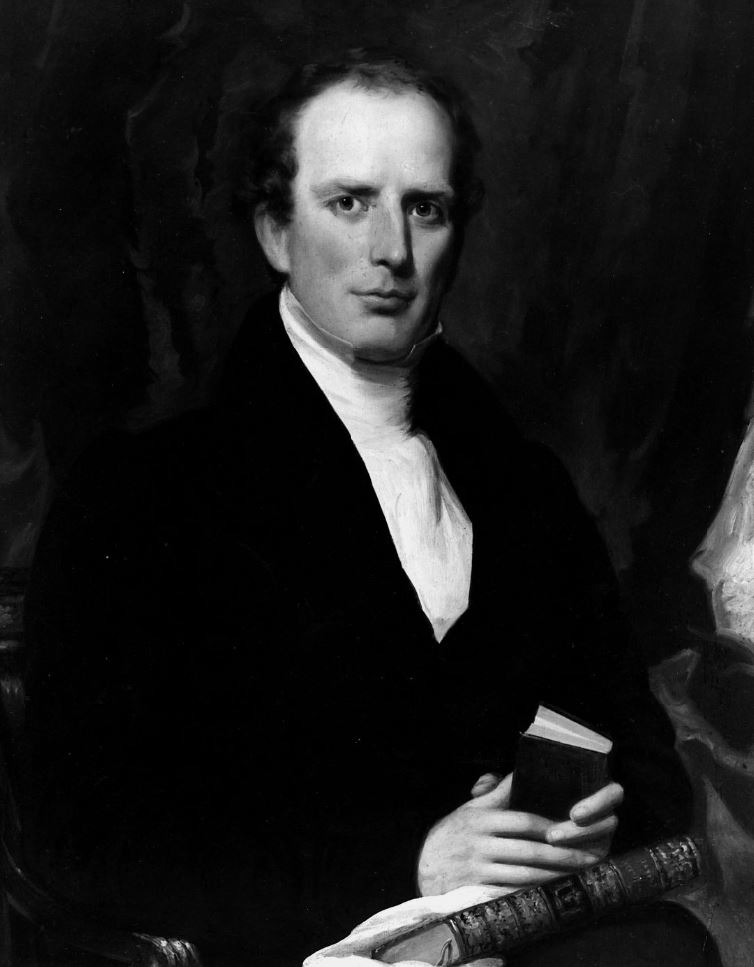
Charles Grandison Finney – Father of modern revivalism and the leading figure of the Second Great Awakening
Introduction
Charles G. Finney (1792-1875) was raised in Oneida County, New York, which at that time was still considered a wilderness. There were no Sunday Schools or opportunities for religious education, leaving the people with no religious convictions. The few ministers that passed through were described as uneducated, and laughably so.
Finney’s conversion in 1821, at 29 years of age, was extremely dramatic, and was accompanied by a powerful baptism of the Holy Spirit. You can read about it here. Immediately following his conversion, he abandoned his promising career as a lawyer and by 1824 was ordained as a Presbyterian minister. By 1827 he had “risen to national prominence as the most effective evangelist in the West.”
Being supported as a missionary by the Female Missionary Society of Oneida County, New York, Finney’s first assignment was work in Jefferson County, New York.
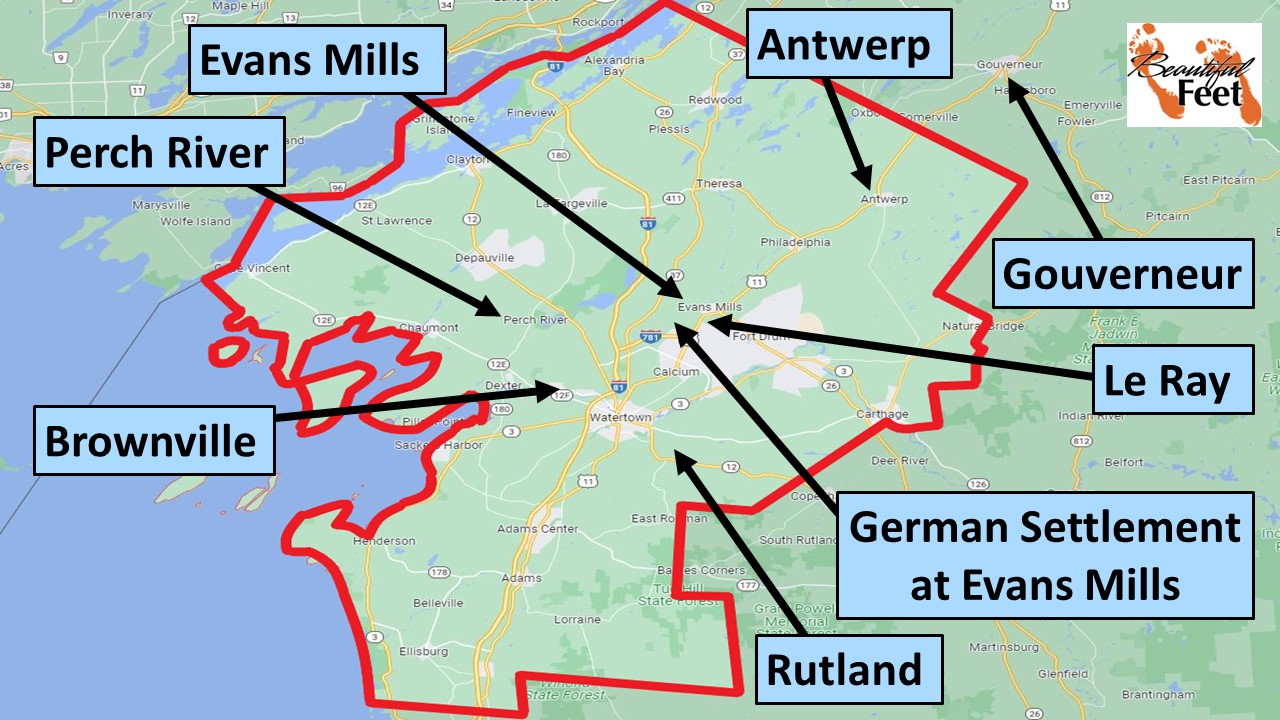
Jefferson County, New York. This shows a few of the locations where the revivals occurred during 1824-1825.
From the end of March 1824, Finney had been preaching on alternate Sundays in Evans Mills and Antwerp. He concluded his ministry in Antwerp in October of that year. Having given the congregation in Evans Mills a commitment to remain as their part-time pastor for one year, he refocused his attention on that congregation and the surrounding towns.
Revival at Perch River
A messenger from Perch River, New York, came to Evans Mills, informing Finney of a revival that was “working its way slowly among the people,” and asked Finney to come and preach there at least one time. He agreed, and arrived on a Tuesday night. When the intensity of the interest at Perch River was recognized by Finney, he preached again on Wednesday, and then Thursday.
Revival at Brownville
The revival movement eventually reached Brownville, New York. So powerful was the move of the Holy Spirit in that area that Finney made the commitment to spend the winter of 1825 there.
The discouragement Finney encountered at Brownville rested in a couple of different situations:
► The Presbyterian church’s congregation was made up of Presbyterians, Baptists, and Methodists, and some of the members were even Universalists.
► The pastor and his wife were not always supportive of the revival effort, and at times were absent from meetings. Sometimes the absence was due to attending parties.
► A division ensued in the church with some influential members leaving and joining the Episcopal church.
Finney left Brownville in the early spring of 1825, only to encounter another revival outbreak in Le Ray, New York.
Revival at Le Ray
Finney had been absent from his wife for 6 months. Leaving Brownville, New York, in the early spring of 1825, he was planning to get his wife with his horse and sleigh and bring her back to Evans Mills. En route to get her, he stopped in Le Ray, New York, to get his horse reshod. The people, upon hearing that he was in town, requested him to preach.
Finney agreed to their request, and at 1 p.m. they met at the schoolhouse. With the building being packed, and while preaching,
The Spirit of God came down with great power upon the people. So great and manifest was the outpouring of the Spirit, that in compliance with their earnest entreaty I concluded to spend the night there and preach again in the evening. But the work increased more and more; and in the evening I appointed another meeting in the morning, and in the morning I appointed another in the evening; and soon I saw that I should not be able to go any farther after my wife.
He sent another man with his horse and sleigh to get his wife and he continued preaching every day and night for several weeks, and according to Finney, “we had a powerful revival.”
After preaching there a few weeks, a great majority of the town was converted, with one of the converts being a highly respected man, Judge Samuel C. Kanady.
Revival in Rutland
After a few weeks of ministering in Le Ray, the people asked Finney to go and preach at a Baptist church in Rutland, New York.
Finney schedule himself to preach there on an afternoon, and,
The Spirit of the Lord was evidently poured out on the congregation; and at the close of the sermon I did what I do not know I had ever done before, called upon any who would give their hearts to God to come forward and take the front seats.
The moment Finney invited people to come forward, a young lady, glamorously dressed,
Burst out into the aisle, and came forward, like a person in a state of desperation. She seemed to have lost all sense of the presence of anybody but God. She came rushing forward to the front seats, until she finally fell in the aisle and shrieked with agony. A large number arose in different parts of the house and came forward; and a goodly number appeared to give their hearts to God upon the spot.
Methods Finney Used in the Promotion of the Revival
► Daily preaching—focusing on solid doctrinal truths—using homes, barns, schoolhouses, and the open air
► Conducting protracted meetings (revival services) over a period of days or weeks
► Private and corporate prayer meetings
► Teaching conferences
► A lot of personal conversation by making personal visits to homes
► Meetings with those inquiring about the condition of their souls
► Encouraging the immediate reception of new converts as members in churches
► Allowing women to pray and exhort during church services
► Utilizing women’s prayer groups to capitalize on existing social networks for evangelism
► During his sermons those who felt the conviction of sin and their need of a Savior were invited to come to the front to sit in the pew reserved for them. This pew was called the “anxious seat.” Others have termed this the “mourners’ bench.”
► Praying for people publicly by name
Opposition from Ministers
One of the criticisms Finney received from other ministers was the simplicity of his sermons, as he would frequently use illustrations from daily life: farming, mechanics, and any occupation. He would also use language that common people would understand—without them having to use a dictionary to understand his vocabulary—something quite different from other ministers.
The ministers said Finney would never be able to convert the more educated people in the community by preaching like that, but they were wrong, as judges, lawyers, and others of the educated class converted through his ministry.
Another major criticism was about permitting women to play an active role in ministry, as Finney encouraged them to:
► Pray and exhort during church services.
► Evangelize and conduct prayer meetings outside church services.
Primary Sources
► Chapter IX: The Memoirs of Charles G. Finney by Charles G. Finney
► The Memoirs of Charles G. Finney: The Complete Restored Text by Charles G. Finney
Secondary Sources
► Charles G. Finney by Wikipedia
► Charles Grandison Finney & the Second Phase of the Second Great Awakening by Christian History Institute
► Eerdman’s Handbook to Christianity in America by Mark A. Noll
► Fire From Heaven by Robert Evans
► Great revivals and the Great Republic by Warren Candler
► History of the First Congregational Church of Antwerp by New York Genealogy
► Man of Like Passions: The Life Story of Charles Grandison Finney by Richard E. Day
► Memoirs of Revivals of Religion by Charles G. Finney
► Memoir of the life and character of Rev. Asahel Nettleton by Bennet Tyler
► New England Revivals by Bennet Tyler
► Second Great Awakening by Wikipedia
Return to List of Revival Stories
Chet & Phyllis Swearingen:
Office: (260) 920-8248
romans1015@outlook.com
Beautiful Feet
P.O. Box 915
Auburn, IN 46706

